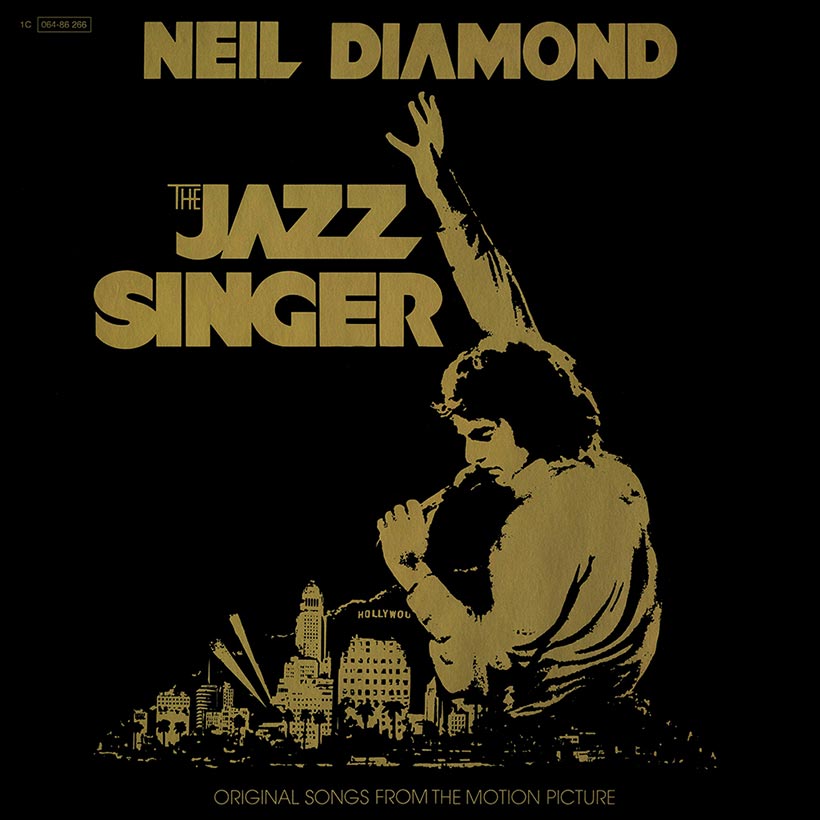
After listening to the podcast How Did This Get Made on the film The Jazz Singer starring Neil Diamond, I did two things: 1. I re-watched the film to see if it was a bad as the podcast hosts said it was (it wasn’t). 2. Relistened to the soundtrack to get a sense of the quality of the songs almost 40 years later. The soundtrack is interesting because while the film was panned by critics when it was released, the soundtrack sold over five million copies and produced three top ten hits — with the anthem “America” being a song that still has its fans during karaoke nights at local bars. The film made money as well, but not as much as the soundtrack did. Granted, it was released during a time when “mass appeal” was the buzz word in the radio industry, and Top 40 stations really adhered to that directive by playing a wide variety of music back then. Yes, there were niche formats back then, but Top 40 still ruled the airwaves. Sensing that, Diamond seemingly set out to write a collection of songs to compliment the film he was starring in — but did so in a mass appeal way. How else can one explain the stylistic differences between say “On the Robert E. Lee,” “Amazed and Confused,” and “Love on the Rocks?” It’s odd (in a racially tone-deaf way) that in the film “On the Robert E. Lee” is used as a party song with Diamond’s back up singers — all of whom happen to be black and are really into the vibe of the song about a boat named after a confederate commander during the U.S. Civil War. Perhaps it’s a way for Diamond to check a number of boxes in his ode to American pluralism on the record. Southern banjo-based song? Check. Traditional Jewish hymns? Check. String-soaked Adult Contemporary mid-tempo numbers and ballads? Check. Check. Check. Check. A couple of safe mild rockers? Check and Check. And how about that thrilling anthem? Big time check. Add up all those checks and you get a mass appeal record that leads to a giant payday — which is exactly what happened when this album was released.
Sidebar [One thing I should note is that for a soundtrack to a film called The Jazz Singer, Diamond didn’t write any songs that had even a hint of jazz. An odd omission since, well, jazz is a uniquely American musical genre that expresses individualism and pluralism — both themes Diamond does explore in this album.]
“America” can easily be written off as a kind of early Reagan-era anthem about pull-yourself-up-by-your-bootstraps strivers, but in today’s political world where immigrants are seen as unwashed hordes coming to take your jobs away and suck off government welfare, Diamond’s ode to immigrants is almost politically subversive. But what of the song itself? It is a rousing number with a lot of great production elements using a dramatic string intro that touches on the main melody and then into the thumping rock(ish) main part of the song. The verses are strong with images of immigrants huddling close while traveling far to America to pursue their dreams as free human beings. It’s a great album opener with all the right elements in the right places. Fist-pumping chorus, verses where immigrants travel light in the “eye of the storm” to get to their new home. A pingy synth carrying the melody, and it all builds and builds until Diamond brings it to a close with a whispered “today.” Sure, it’s pure patriotic schmaltz, but Diamond does it so well — and without a hint of irony.
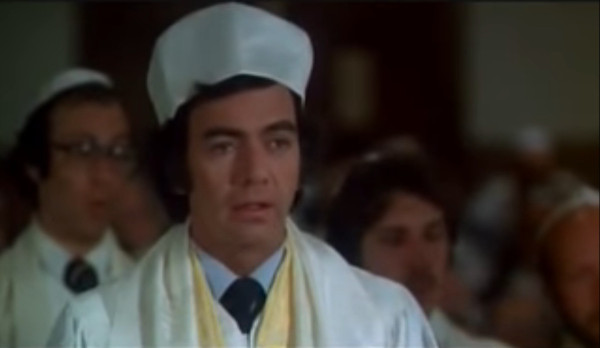
Although Diamond is singing about immigrants writ large in “America,” the film is about a Jewish assistant cantor who wants to be a rock star. So, in “Adon Olom,” we get a 36-second snippet of this traditional Sabbath hymn to hammer home the point that in a pluralistic society, one often has to straddle between tradition and the present.
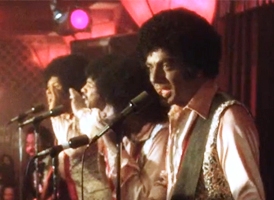
To represent the present (and the dream Diamond’s family came to America for) is the song “You Baby.” It’s what can be called a classic Neil Diamond rocker in the style of “Cherry Cherry.” Though it’s not as good as “Cherry Cherry,” it makes the point that Diamond can write rock songs with a soulful twist that’ll get black folks dancing (as shown in the film with Diamond in blackface — which totally wouldn’t happen in real life). Still, this is supposed to be Diamond’s dream job: a singer in a rock band belting it out in front of a wildly enthusiastic audience.
Sidebar [Diamond’s character in the film writes songs for a black soul/pop group. He’s dragged into being the lead singer at a club when the band’s real lead has been jailed for stealing cars. Diamond in blackface/brownface was done for both comedic effect and as a kind of callback to the original film from 1927 starring Al Jolson. In 1980, I think people got the joke that three black guys put brown make-up on Diamond’s character so he can pass for black in a club that’s hostile to folks with white skin tones. They do it because they are in a bind right before a gig. Diamond looks ridiculous, but that’s the point. His music, however, is supposed to be in the style of what black folks in New York were grooving to at the time — which makes “You Baby” even more ridiculous in a different way.]
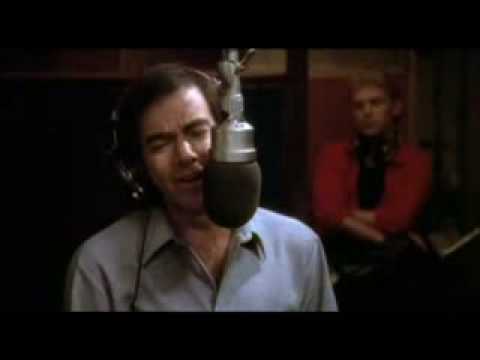
Bringing it back to earth is “Love on the Rocks.” It’s a kind world-weary ballad co-written by Gilbert Bécaud — who penned “Let Me Be Me,” which was a favorite song of Diamond’s when The Everly Brothers covered it. “Love on the Rocks” is meant to convey a relationship that’s gone south (in the film, it’s Diamond’s character pulling away from his more traditional wife), but because Diamond really belts it, sometimes the sadness of the lyrics gets overshadowed by the soaring chorus — making you forget you’re listening to guy spill his feelings about love, feeling trapped, and a break up.
“Amazed and Confused” has the potential to really rock — especially with Richard Bennett on guitar. But this is a Neil Diamond song, and the rocking is often tempered with a softer sheen. And so it goes with this song. Lyrically, Diamond returns to that “two worlds” metaphor that comes up throughout the record. On this tune, he has two people waiting on the opposite sides of the River Jordan. One will eventually get there (i.e., back to tradition), but along the way, he’s going to walk that line between the two worlds and be, yes, amazed and confused, dazed and used. Yes, the free world can beat the hell out of you, but as long as you know where you came from, no matter how much the world amazes and confuses you, you can always return home in the end.
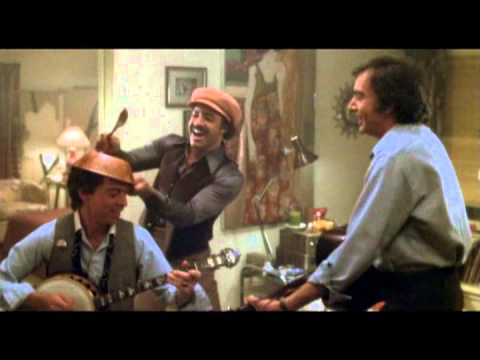
There’s not much else I can write about “On the Robert E. Lee” other than it’s a romantic Southern banjo-based song that seems out of place. It’s almost like a show tune made for a film that couldn’t quite find a place for it, so they stuck it in a party scene with a bunch of black folks really enjoying the song. Head-shakingly stupid scene in the film — and the song should have been left off the soundtrack.
“Summerlove” is completely underwhelming, but it’s used twice in the film. If it sounds like a filler song, it probably is. There’s a waltz feel to the music, the lyrics are about a boy meets girl tryst, but it seems like the song goes on far too long — even though it clocks in at three minutes and seventeen seconds. In the movie, Diamond opens with this clunker at a comedy show. Wow. Way to warm up the audience, Neil. Thankfully, the audience reaction to him coming out looking lost and unsure while blowing one or two notes on the harmonica is about right: someone calls him a turkey. I would have said something worse, but it’s a PG-rated film.
“Hello Again” is the other side of the “Love on the Rocks” coin. Instead of world-weariness, we get a guy who is head over heels in love — even after going “through it all.” The orchestration employs a similar use of strings to really beef up this treacly hit. The song is tailor-made for Adult Contemporary radio, with Diamond’s slow build into an over the top chorus. And like “Love on the Rocks, “he brings it down into a pillowy-soft landing.
“Acapulco” is the getaway song. Meaning that it’s about as lyrically deep as “Kokomo” by The Beach Boys. It’s difficult to write more about this song other than Diamond must have known that it was going to be used during a montage sequence in the film. How else can you explain the song?
“Hey Louise” is another attempt by Diamond to recapture that “Cherry Cherry” sound that he delves into on “You Baby.” Around this time, most of the songs featured in the film were ballads or mid-tempo tunes. Aided by Bécaud, Diamond crafts a pretty tepid rocker that has the added bonus of a few stock French phrases.
By the time “Songs of Life” rolls around, I think even the most diehard ballad fans were crying “Uncle.” It’s not that the tune is bad, it’s just that Diamond needed a better editor of the songs he wanted to feature in the film’s soundtrack. The up and down tempo of the song selection on Side 2 on this collection makes it a bit whip-saw, especially when “Jerusalem” follows it. Speaking of “Jerusalem,” it’s a piano-based semi-rocker where a string section tries to lift the song up, but really what it needs is just a four on the floor guitar, drums, and bass to make it more of a rock song and less of soft rock one.
“Kol Nidre/My Name Is Yussel” we hear Diamond really getting back to tradition by singing this hymn sung for Yom Kippur. He doesn’t hold back, and even though it’s clearly meant to be in the movie, coming after “Jerusalem” it’s a bit jarring. However, it does work well as a transition into a reprise of “America” that closes out the record.

Neil Diamond said that he didn’t have a very good time making the film The Jazz Singer. It clearly shows in his performance, but he really poured his heart into making a record about American pluralism from a Jewish perspective. Think about that for a minute. A pop record soundtrack that really explores themes of immigration, religion, love, loss, faith, and coming home in a series of songs meant for mass appeal consumption. On paper, it looks like a loser, but in Neil Diamond’s hands, it’s pure mellow gold.
Note: a version of this post appeared on my blog on July 26, 2019